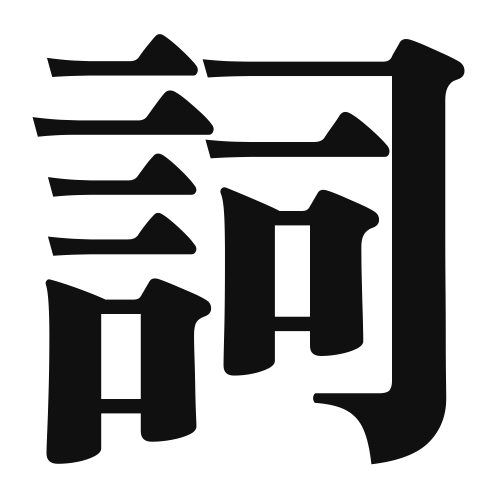1. Overview of Meaning
The kanji 詞 (shi) primarily means “word” or “phrase.” It is often associated with poetry, lyrics, and the art of expression through language.
2. Formation and Radical
The kanji 詞 is a compound character, which means it is formed by combining different elements. It is classified as a phonetic-ideographic character (形声文字), where the left part (言) indicates a relation to speech or language, and the right part (司) contributes to the pronunciation.
The radical of 詞 is 言 (gen), which relates to words and speech, highlighting its connection to language.
3. Examples of Usage
Common words and phrases that include 詞 are:
- 詩詞 (shishi) – poetry and lyrics
- 歌詞 (kashi) – song lyrics
Example sentence in daily conversation:
「この歌の歌詞はとても感動的です。」
(The lyrics of this song are very moving.)
4. Synonyms and Antonyms
Similar kanji with related meanings include:
- 言 (gen) – meaning “word” or “speech,” but more general and not specifically related to poetry.
Antonyms include:
- 無言 (mugon) – meaning “silent” or “without words,” which conveys the opposite of expression through language.
5. Cultural and Historical Background
The kanji 詞 has significant ties to Japanese culture, particularly in the realms of poetry and music. Traditional forms of Japanese poetry, such as 俳句 (haiku) and 和歌 (waka), emphasize the beauty of words and expression.
Proverbs and idiomatic expressions that include 詞 often reflect the importance of language in conveying emotions and thoughts, such as:
- 言葉は心の窓 (Kotoba wa kokoro no mado) – “Words are the window to the heart.”
